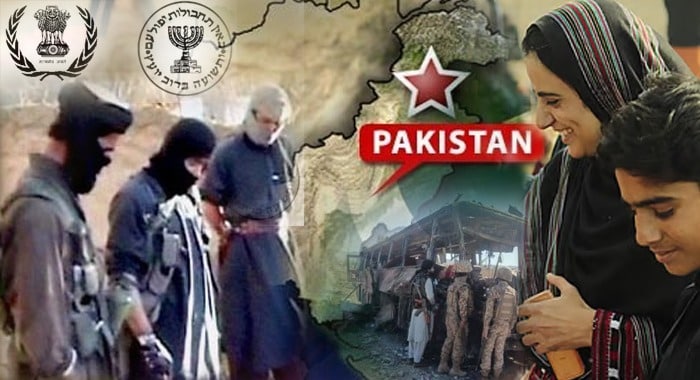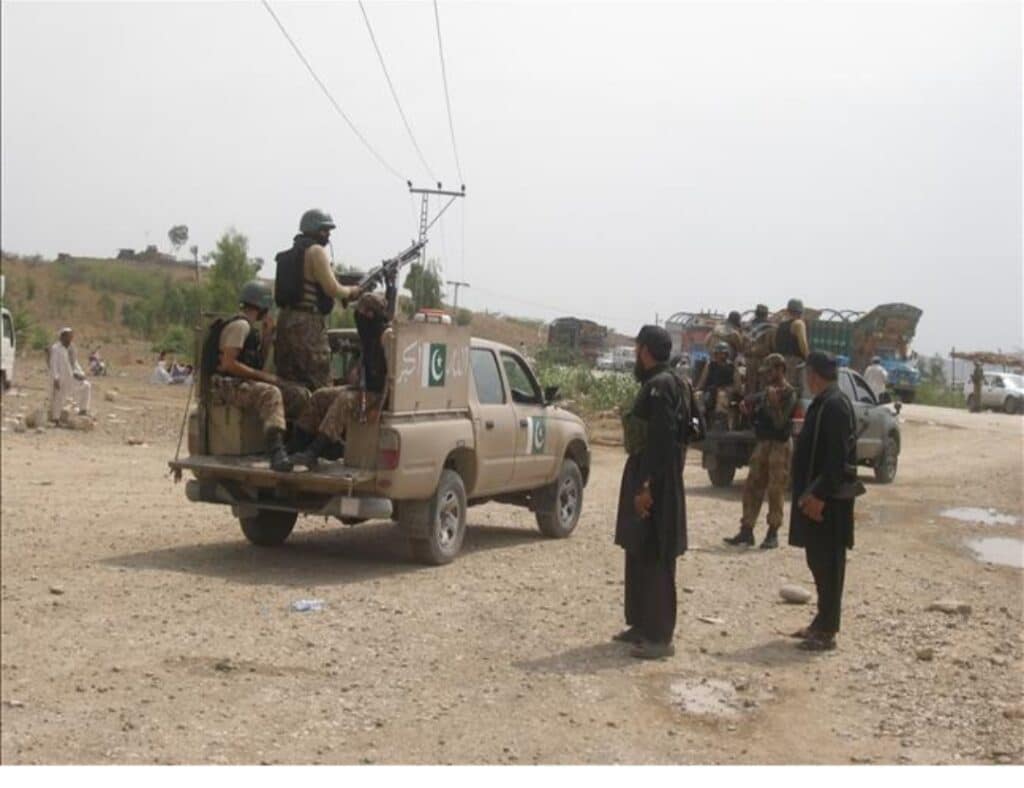Dr. Qadar Bakhsh Baloch, a senior defence analyst, has presented a comprehensive narrative on what he terms the “Fitna-e-Hindustan”, India’s proxy war in Balochistan. According to Dr. Baloch, these efforts represent a long-standing covert war that India has been waging through sponsorship of non-state actors, with devastating impacts on Pakistan’s security, economy, and regional relations.
Dr. Baloch defines a proxy war in political science as a covert conflict in which a country targets another indirectly, using a third party, another country, organisation, or non-state actor. He states that India has been using Afghan soil to pursue its strategic ambitions in Balochistan, backing separatist outfits such as the BLA (Balochistan Liberation Army), BLF (Balochistan Liberation Front), TTP (Tehreek-e-Taliban Pakistan), and even Daesh, by facilitating, planning, and financing their activities.
A Historical Pattern of Indian Proxy Strategy
Dr. Baloch contextualises the current proxy war in Balochistan within a broader historical trend in South Asia. He recalls that after the partition of India and Pakistan, Afghanistan, backed by India, engaged in diplomatic and political efforts to oppose Pakistan’s existence. He references Faqir Ipi’s armed resistance in Bannu and notes that when the State of Kalat was annexed to Pakistan, its prince, Karim Agha Khan, sought refuge in Afghanistan and supported insurgent efforts from there.
In the late 1960s and early 1970s, Dr. Baloch says India revolutionised proxy warfare by training over 100,000 fighters for the Mukti Bahini in East Pakistan, transforming it from a guerrilla force into a full-fledged militarised movement. He believes this effort successfully fractured Pakistan, giving birth to Bangladesh.
He further cites the Indian support of the LTTE in Sri Lanka, noting India’s moral and political endorsement of the Tamil Tigers, who pioneered suicide bombings and were responsible for the assassinations of Indian Prime Minister Rajiv Gandhi and the Sri Lankan President.
Why Balochistan?
According to Dr. Baloch, India sees Balochistan as an ideal location for launching its proxy war because of its geo-strategic, geo-economic, and geopolitical relevance. The region’s ethnic composition and geographic positioning, touching the Arabian Sea and neighboring Iran and Afghanistan, make it a highly sensitive area for Pakistan. He asserts that the goal is to create instability, political, economic, and security-related, to undermine Pakistan’s sovereignty.
He adds that Indian proxies aim to stretch Pakistan’s military by keeping it engaged on the western front. He cites the May 2025 conflict as an example, where forces remained tied up in Balochistan and KP, unable to move to the eastern front due to domestic unrest.
Economic Warfare and the CPEC Factor
Economic destabilisation is another objective of the alleged proxy war, Dr. Baloch says. He argues that continuous unrest hampers foreign investment in Balochistan’s rich mineral reserves, valued at nearly one trillion rupees, and in China-Pakistan Economic Corridor (CPEC) projects.
Dr. Baloch observes that after the announcement of CPEC in 2013-14, militant activities intensified in southern Balochistan, especially along the 700-km-long coastal highway and around Gwadar Port. He believes the location was deliberately chosen as a soft target due to its strategic importance. The insurgency, initially limited to eastern areas like Marri and Bugti tribal regions, has since shifted to the south, he notes.
Destabilising Regional Diplomacy
Dr. Baloch also asserts that Indian proxies intentionally provoke tensions between Pakistan and its neighbours, Iran and Afghanistan. He recounts the February 2024 border shelling incident between Pakistan and Iran, in which several individuals linked to Fitna-e-Hindustan were reportedly killed in Iranian Sistan-Balochistan. These individuals were allegedly listed as missing persons in Pakistan, and some were even featured in photographs circulated by activist Mahrang Baloch.
This, Dr. Baloch says, indicates they were not forcibly disappeared by Pakistani forces, as claimed, but were operating from across the border. He suggests that such cross-border activity fuels distrust between neighboring states and further isolates Pakistan diplomatically.
Evidence and Incidents
When asked for evidence of India’s involvement, Dr. Baloch points to several incidents:
Targeted killings of non-Baloch labourers, Sindhis, Punjabis, and Siraikis, including marble and coal mine workers.
Attacks on banks, government employees, and retired military personnel.
The 2016 arrest of Kulbhushan Jadhav, an Indian Navy officer allegedly operating under RAW, whose confessional statement was submitted to the UN and ICG without challenge.
Psychological warfare campaigns aimed at radicalising youth by portraying the BLA and BLF as “freedom fighters.”
EU DisinfoLab’s 2020 exposé of 265 fake media outlets and multiple NGOs allegedly used to push anti-Pakistan and anti-China narratives in Balochistan.
International Footprints and Technological Warfare
Dr. Baloch links India to global assassinations of Sikh leaders in Canada, the US, Australia, and the UK, asserting this pattern mirrors Indian behaviour in Balochistan. He further highlights:
The 2018 attack on the Chinese consulate in Karachi by BLA operative Basit, whose aunt was recently arrested with a Starlink receiver and encrypted communications gear.
The 2019 attack on the PC Hotel in Gwadar targeting Chinese nationals.
The 2020 Karachi Stock Exchange attack aimed at disrupting Pakistan’s financial hub.
The Jaffar Express train attack and a school assault in Khuzdar in 2025, mirroring the 2014 APS Peshawar attack.
He adds that Starlink devices and laptops with training manuals and operational maps have recently been recovered from Gwadar, Mastung, and Panjgur. He believes these are signs of a well-integrated technological network involving BLA, BLF, TTP, and Daesh, all backed by RAW.
Funding and Training
According to Dr. Baloch, illegal financial networks such as Hawala and Hundi have funneled money from India and from organisations in Dubai. He also cites the cases of Aslam Achoo and Brahamdagh Bugti, both allegedly received medical treatment and attended seminars in India despite their associations with banned militant outfits.
Strategic Objectives
Dr. Baloch outlines five main objectives behind the alleged Indian proxy campaign:
Disrupting CPEC to derail China’s economic expansion and Pakistan’s stability.
Preventing investment in Balochistan’s mineral and maritime infrastructure.
Sabotaging regional relations with Iran and Afghanistan.
Causing military overstretch by engaging Pakistani forces on multiple fronts.
Undermining sovereignty through internal conflict and economic strain.
Proposed Response Strategy
In closing, Dr. Baloch offers a multi-pronged strategy to counter the proxy threat:
Immediate security enhancement at key node points, equipped with surveillance, mobility, and technological support.
Aggressive counter-terror operations to sweep and eliminate confirmed threats.
De-radicalisation programs in schools, universities, media, and intellectual discourse to promote unity and patriotism.
Rehabilitation of grey-area youth, helping them reintegrate into society with economic support.
Institutional strengthening of police, CTD, and judiciary for swift and fearless action.
Inclusive governance with visible development and active public participation in monitoring Rs. 250 billion in federal development funds allocated to Balochistan.
Finally, he calls for strict accountability of corrupt elements and transparent management of Balochistan’s natural resources, especially coal, minerals, agriculture, and CPEC revenue streams.





